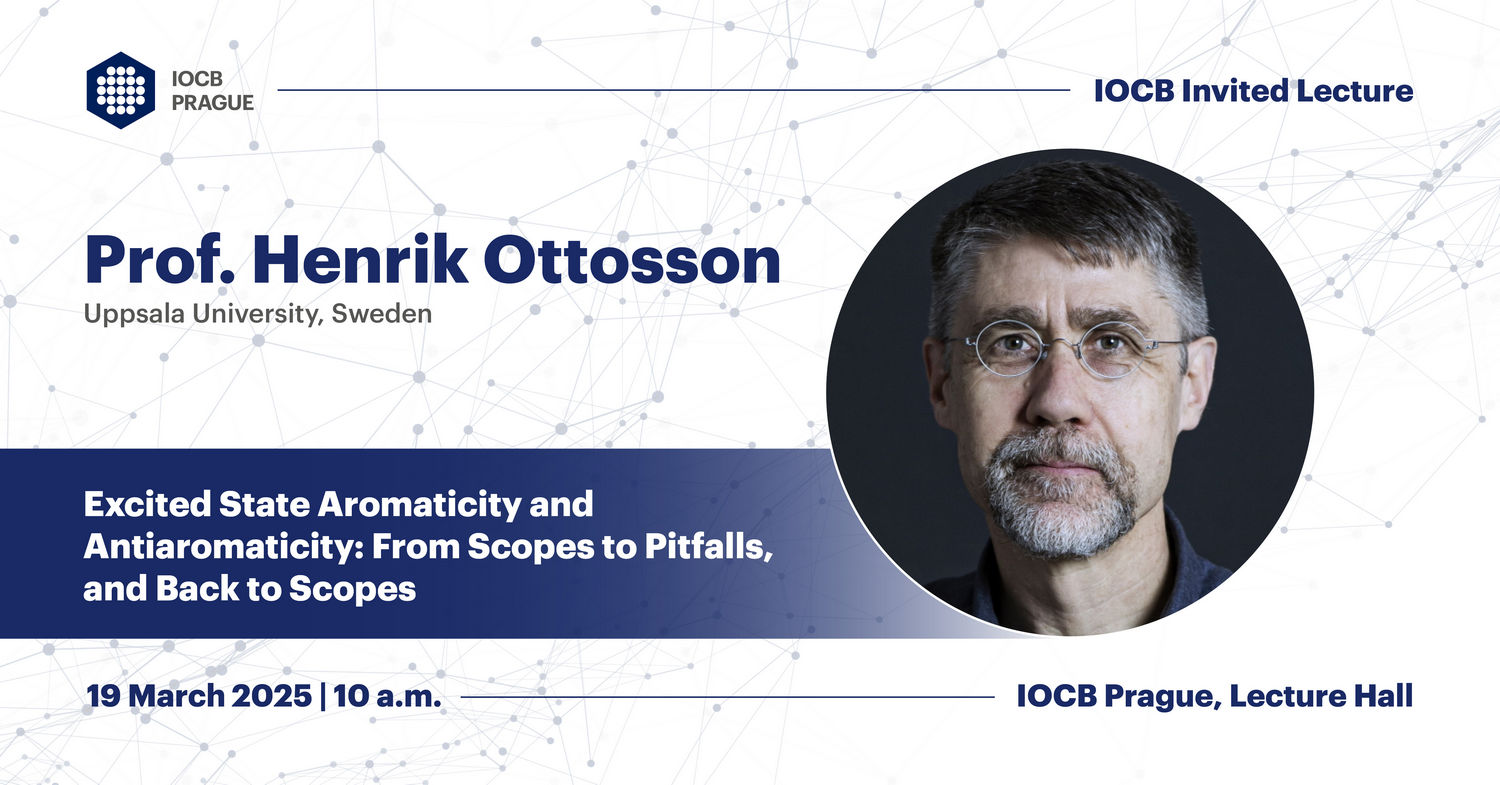
Prof. Henrik Ottosson (Department of Chemistry, Uppsala University, Sweden)
Excited State Aromaticity and Antiaromaticity: From Scopes to Pitfalls, and Back to Scopes
19 March 2025, 10 a.m.
IOCB Prague, Lecture Hall
Abstract
The use of excited state aromaticity and antiaromaticity (ESA & ESAA) to rationalize excited state properties and processes has grown rapidly in recent years.1-3 These concepts are of fundamental character, and with a basis in Baird’s rule, they allow for rationalization of a number of photophysical and photochemical observations.3 Yet, a plethora of applications of the ESA & ESAA concepts have also emerged. For example, one can explain the molecular origin of the exceptionally high excitation energy of H3+ (19.3 eV),4 and one can design improved triplet state quenchers for self-healing fluorophores of use in bioimaging.5
However, there are also limitations, complications and pitfalls. Excited state aromaticity is often taken as synonymous to Baird-aromaticity,1 i.e., aromaticity of 4nπ-electron cycles in their lowest π,π* triplet states. But instead of Baird-aromatic, some molecules are Hückel-aromatic or Hückel-Baird hybrid aromatic in their lowest excited states,6,7 while others are not excited at the conjugated rings but at different functional moieties.8 Singlet excited states are more numerous than the triplet states, and they are often more intricate computationally. States with different numbers of πα- and πβ-electrons, such as the n,π* states of certain heteroaromatics, may also appear as aromatic according to computations.9 Finally, there are differences between various computational methods and (anti)-aromaticity descriptors, and the latter may also come with different pitfalls.10 Thus, for the proper and efficient utilization of the ESA & ESAA concepts in various applications there are a number of fundamental aspects that need to be explored. In my talk I will give a brief overview of presently known limitations, complications and pitfalls, yet, also show how we based on this knowledge are in the position to utilize the ESA & ESAA concepts more correctly and comprehensively in a range of areas.
References
- N. C. Baird, J. Am. Chem. Soc. 1972, 94, 4941.
- (a) H. Ottosson, Nat. Chem. 2012, 4, 969. (b) L. J. Karas, J. I. Wu, Nat. Chem. 2022, 14, 723.
- (a) M. Rosenberg, C. Dahlstrand, K. Kilså, H. Ottosson, Chem. Rev. 2014, 114, 5379. (b) J. Yan, T. Slanina, J. Bergman, H. Ottosson, Chem. Eur. J. 2023, 29, e202203748.
- J. Toldo, J. Staab, E. Matito, C. Foroutan-Nejad, H. Ottosson, ChemRxiv 2024.
- O. El Bakouri, M. A. Johnson, J. R. Smith, A. K. Pati, M. I. Maxwell, S. C. Blanchard, H. Ottosson, submitted.
- W. Zeng, O. El Bakouri, D. Szczepanik, H. Bronstein, H. Ottosson, Chem. Sci. 2021, 12, 6159.
- K. Jorner, F. Feixas, R. Ayub, R. Lindh, M. Solà, H. Ottosson, Chem. Eur. J. 2016, 22, 2793.
- S. Escayola, C. Tonellé, E. Matito, A. Poater, H. Ottosson, M. Solà, D. Casanova, Angew. Chem. Int. Ed. 2021, 60, 10255.
- N. Proos Vedin, S. Escayola, S. Radenkovic, M. Solà, H. Ottosson, J. Phys. Chem. A 2024, 128, 4493.
- P. J. Mayer, H. Ottosson, J. Phys. Org. Chem. 2025, in press.



